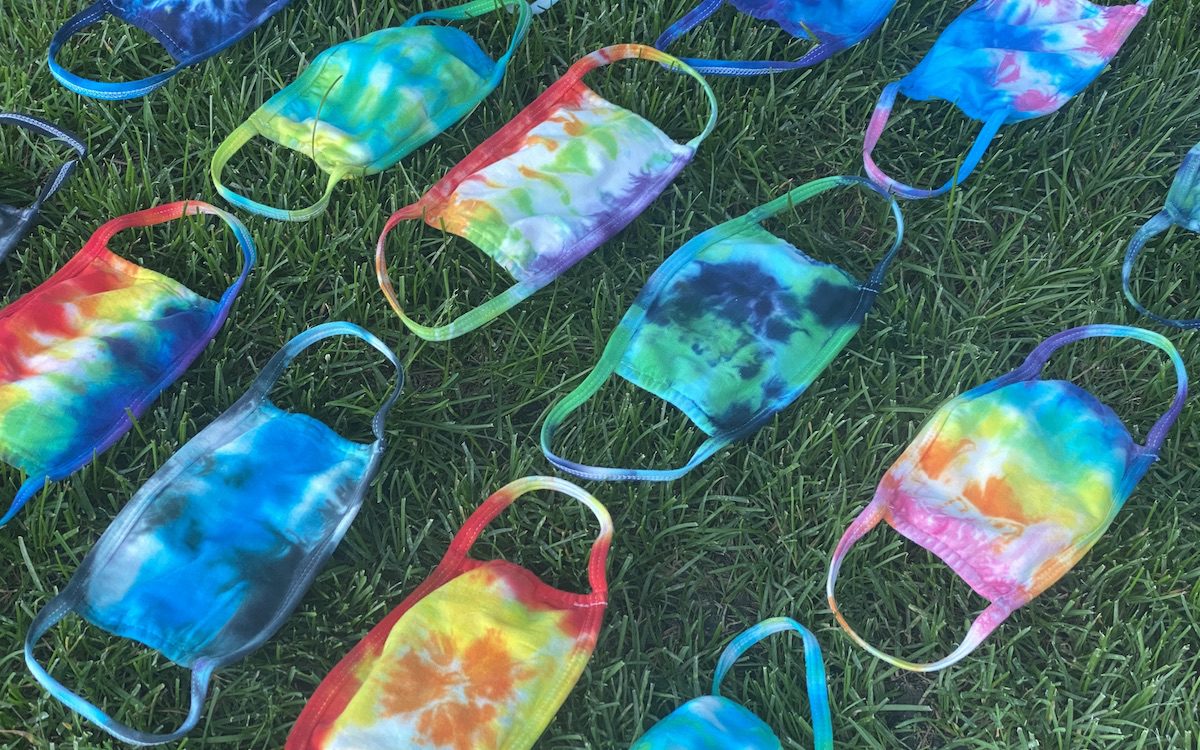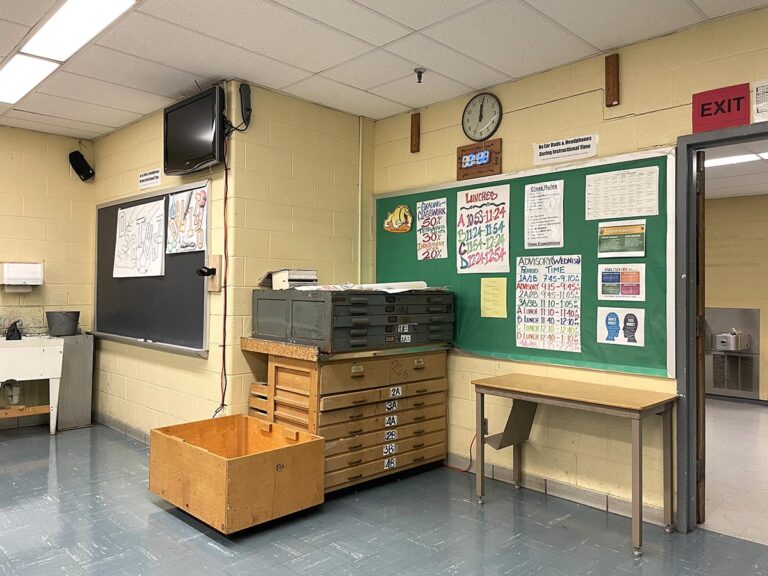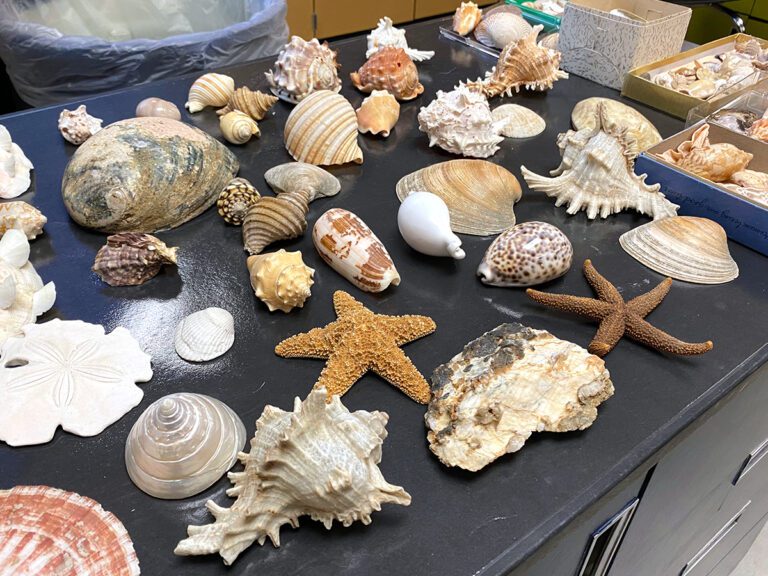With plans and news of states returning to school, many art teachers are left with more questions than answers. I think most of us can agree we want answers, but also recognize there aren’t definite answers. Some areas around the country go back to school as early as August, while others go back in September. Each state and school district is going to have different requirements, guidance, and plans as you return to school. Keeping this in mind, you’ll need to adapt and run your art room in a way that works for you.
Unfortunately, I don’t have the answers for you either, and there is not going to be a one-size-fits-all approach. But, I will provide you with some ideas and food for thought as you return to school.
Here are 5 different areas to consider as you head back to school with your students.
1. Masks and PPE

The requirements of masks and personal protective equipment being worn within the school setting will vary. Some schools have already decided to order masks for all staff and students. However, decisions on whether they will be required to be worn might still be open for debate. It may be likely that teachers are required to wear them, while it’s only highly recommended for students. Whatever your guidelines might be, the question that comes to mind is, “How are we actually going to get students to wear them?” Well, we might not be able to, but we can try. My first lesson when I head back to school will be for students to create their own tie-dye masks. Maybe, just maybe, if we give them a little ownership, they’ll be as excited as one can get about wearing their mask.
Connect and learn with other teachers. Register for the NOW Conference.
2. Cleaning Art Supplies
Cleaning is part of being an art teacher. Even before COVID-19, some days in your classroom probably felt like you were washing and cleaning all day. Now that we’ll be back in school, you’ll need to take this even more seriously. Unless your school districts can triple your art budgets, it will be nearly impossible for students not to share at least some items in the art room. This means both you and your students are going to have to take extra care with cleaning and sanitizing. You will need to put new procedures and routines in place.
Here are some questions you might ask yourself as you begin thinking through new procedures:
- How will students sanitize their hands upon entering the art room?
- Will they wash them with soap and water at the beginning of class?
- Will each student get a wipe or hand sanitizer as they enter the room?
- How will I limit the sharing of art materials?
- What will my students be responsible for cleaning at the end of class?
- What cleaning solutions will students be able to use safely in my classroom?
The CDC has released guidelines for cleaning schools. Within these guidelines, you will find an approved list of disinfectants provided by the EPA. Additionally, you will want to look at local guidelines provided by your state.
3. Organizing Your Art Supplies Differently
Because there are now more considerations on how we clean art materials, this might mean we have to reevaluate how we organize our supplies. Ideally, to cut down the sharing of materials, you would be able to assign materials to your students. This practice will be far easier in the secondary setting in comparison to elementary. Some materials you might assign are paintbrushes and drawing materials. Depending on the different classes you teach, you may also want to try and not use the same materials to help limit use. For instance, if one class section is using oil pastels, try using a different material for the other classes.

Long gone are the days of having a communal bin of art materials, it’s time to find a different way to organize. One method I already use is to organize materials by table using small plastic totes with lids. Inside, materials are stored and assigned per table. In my art room, I have ten tables, meaning that I would typically have ten supply boxes for students to use and share. I’m looking to increase the number of supply boxes to cut down on sharing.
Additionally, coming up with a plan to alternate the use of materials might be beneficial. For instance, if your first-hour students are using one set of materials, have a different set of materials, your 2nd-hour students can use. This will give you more time to clean or the disinfectant more time to work.
4. Adapting to Your New Schedule
There will probably be changes to your school schedule you will need to adapt to. One of the biggest schedule changes might be if students are only coming to school every other day. If you are an elementary teacher who only sees their students once a school week, it could be quite some time before you see your students again. In the secondary setting, with teachers usually seeing their students daily, this means you will probably only see your students twice a week instead of five. This will cause some changes to the timing and pacing of your lessons. Depending on what the expectation for online learning is, you might not get to as many projects as you typically would in a “normal” school year. As you plan for these changes, evaluate your curriculum, and pare down your lessons to essential concepts.

For most 2-D art forms, there won’t be many changes other than needing more time to complete an activity. However, you’ll want to consider some logistical measures when teaching with media like clay. If you teach a ceramics class, you might be thinking, “How will students create without their clay pieces drying out before the next class?” This will be a problem, and you will have to adapt to best fit your time constraints. This will include changing project requirements. Although not ideal, you might have to encourage students to work smaller so they can finish projects quicker.
You might also have to prepare more materials ahead of time for your students. For instance, if your students are using an extruder to create coils, instead of having your students do this entire process by themself, you could extrude coils ahead of time. You could store them in a damp box to keep them fresh. The use of a damp box will also be a great solution for keeping clay projects wet. Here are some additional ideas to keep the moisture in works in progress.
5. How to Maintain Physical Distance

Unfortunately, there is only so much we can control when it comes to keeping our students physically distant in our classrooms. We are bound by the size of our classroom and the number of tables available. However, we can control and limit the proximity of students by changing our instructional methods. Gathering students around a central area to sit or watch a demonstration is probably not going to work. Instead, you will want to keep your students in their assigned area, and either project your live demonstration with a document camera or create a flipped instructional video. If you’ve ever considered creating flipped video content, now is the time! This way, you can use your video over and over, and if students are choosing to stay at home, you will still have instruction for them.
It’s safe to say that none of us know what this next school year will hold. It will probably be far from normal, and most of us won’t have a clue what we’re doing until we actually get started with our students. If you find yourself having more questions than answers, know that you are not alone. At the end of the day, we have to use our best judgment, along with the requirements and guidelines from our school districts. It won’t be easy, but art teachers can do anything.
What are your biggest concerns as you head back to school during a pandemic?
What plans are you putting in place to better manage your art room?
Magazine articles and podcasts are opinions of professional education contributors and do not necessarily represent the position of the Art of Education University (AOEU) or its academic offerings. Contributors use terms in the way they are most often talked about in the scope of their educational experiences.






